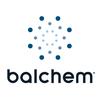Explore all the information on
Dairy cattle - Management practices
Welcome to the page about Dairy cattle - Management practices of Engormix; a source of knowledge on Dairy cattle - Management practices.
Cooling cows in summer improves annual productivity and fertility, enhances comfort and welfare, increases longevity and reduces greenhouse gas emissions through better feed efficiency and higher milk yield. Heat stress causes immense economical losses to the dairy sector. High-yielding cows in hot climates suffer severely from summer heat, but cows are affected by heat stress in almost all regions. This leads to a decrease in milk production and reduced feed...
Comments : 1
Recommendations: 0
Do you have time and space to plant 15,000 trees? Of course it is a tough task! But if you can increase milk yield per cow by 5 liters, for every 150 cows, the environmental impact of this 'd be same as planting 15 thousand trees. To increase profits, for a better environment and to feed the ever increasing Indian and world population, we have to come up with better cows. Genetics here probably is the first and foremost player here....
Comments : 5
Recommendations: 0
It may seem obvious to provide clean and abundant water to your livestock, especially on hot days. However, frequent attention to water sources is just as important in the winter as it is in the summer. For horses, lack of water intake can cause a myriad of issues, the most common threat being impaction colic. When the weather is cold or extremely windy, livestock may not want to leave a shelter to go for a drink; they tend to eat more hay to stay warm;...
Comments : 1
Recommendations: 0
Rick Rasby, Professor & Extension Beef Specialist at the University of Nebraska, was invited to the Beef Production Tour organized by Teknal and Nutral to speak about the importance to have a drought-management plan....
Comments : 0
Recommendations: 0
Mike Hutjens, Extension Dairy Specialist, speaks about his two talks: On-Farm Evaluation of Feeding Program and taking the right decisions for feeding in dairy farms in 2014. ...
Comments : 0
Recommendations: 0
Gonzalo Tuñon, Technical Manager of NZ Farming Systems Uruguay, speaks about his study about pasture done in Ireland, common mistakes in pasture management and key principles during the Animal Nutrition Congress (CAENA)in Buenos Aires, Argentina. ...
Comments : 0
Recommendations: 0
Introduction The period from three weeks before to three weeks after parturition in dairy cows, also known as the transition period, is characterized by significant changes in hormonal profile, feed intake, nutrient requirements, metabolism, and energy balance. These changes are known to dramatically affect immune function. Consequently, cows are at greaterrisk of health disorders and mortality during early lactation. In the last week of...
Comments : 0
Recommendations: 0
Ample bedding in stalls can optimize cow comfort, reduce hock lesions and lameness, and increase cow longevity (Tucker and Weary, 2004). The great price increase seen in other more traditional bedding sources has resulted in recycled manure solids (RMS) becoming increasingly common on dairy farms. Recycled manure solids are obtained by mechanical separation of manure removed from dairy cows’ housing systems. Their low cost of recovery,...
Comments : 1
Recommendations: 0
Introduction Dairy farming in New Zealand (NZ) is under increasing scrutiny due to growing environmental concerns. Agriculture as a whole is the largest source of greenhouse gas (GHG) emissions (particularly methane and nitrous oxide), accounting for about 48% of NZ's total emissions in 2007 (Ministry for the Environment, 2010). The dairy sector has been deemed responsible for about 36% of agricultural GHG emissions (Ministry for the Environment,...
Comments : 1
Recommendations: 0
Dairy Cow Nutrition Nutrient requirements for lactating dairy cows vary with the stage and level of lactation, growth rate and stage of gestation. Most dairy producers in Arkansas feed grain in the parlor as the cows are being milked. This allows producers the opportunity to feed cows according to their level of production and to manage the amount and quality of grain that the cow is consuming. Figure 1 (page 2) shows the...
Comments : 3
Recommendations: 0
1 Department of Large Animal Sciences, Faculty of Health and Medical Sciences, University of Copenhagen, Grønnegårdsvej 8, Copenhagen, Denmark. 2 Department of Production Animal Clinical Science, Norwegian School of Veterinary Science, P.O. Box 8146 Dep, Oslo NO-0033, Norway. 3 Department of Clinical Sciences, Swedish University of Agricultural Sciences, P.O. Box 7054, Uppsala SE-750 07, Sweden. ...
Comments : 1
Recommendations: 0
1 UCD School of Veterinary Medicine, University College Dublin, Belfield, Dublin 4, Ireland 2 UCD Centre for Veterinary Epidemiology and Risk Analysis, UCD School of Veterinary Medicine, University College Dublin, Belfield, Dublin 4, Ireland 3 Department of Agriculture, Food and the Marine, Agriculture House, Kildare Street, Dublin 2, Ireland 4 UCD School of Public Health, Physiotherapy and...
Comments : 0
Recommendations: 0
Ronaldo Vibart, scientist at AgResearch from New Zealand, was invited to Argentina to talk about GHG emissions at Mercolactea 2013. ...
Comments : 0
Recommendations: 0
"Modern Milking Technique" Learn 1. Swing Over- Milking Parlor system 2. Cleanliness of Milking parlor shed 3. Cleanliness of Milking parlor system or Machine 4. Cleanliness of chiller and chiller room ...
Comments : 3
Recommendations: 0
Good morning, Is it possible to adapt a Holstein barn to hot weather using fans or air conditioning so that the climate does not affect the production? Thanks! ...
Comments : 5
Recommendations: 0
Literature says that restriction in water intake by a lactating cow will lead to decrease in milk production so, please can you justify with appropriate backings and reasons.. ...
Comments : 5
Recommendations: 0
Horns and Their Growth Horns are the pairs of hard, bonelike, permanent growths projecting from the heads of cattle. They grow from a unique area of skin cells at the base of the horn. At about two months of age, horns become attached to the frontal bone of the skull. A sinus lies within the skull beneath the horn bud. As the horn grows and attaches to the skull, this frontal sinus joins into the adjacent portion of the horn. ...
Comments : 3
Recommendations: 0
Introduction
Management Information Systems in the livestock industry means the employment of a record systems that create databases from which information can be retrieved, processed, batch or real time, to generate quality information that is usable in decision making. MIS in the livestock system can be applied in the following areas (departments):
...
Comments : 0
Recommendations: 0
The governments of Canada and Ontario are making a joint investment to help producers adopt innovative and sustainable on-farm water management practices. Agriculture Minister Gerry Ritz and Ontario Minister of Agriculture, Food and Rural Affairs Ted McMeekin today announced a new initiative that will focus on finding innovative technologies and solutions to water conservation and water use efficiency problems for Ontario farmers.
...
Comments : 0
Recommendations: 0
Shrink results from the stress cattle experience during processing, transporting and marketing, costing both the buyer and the seller. Reducing the stress placed on the cattle during this time will help reduce losses to the value of marketed cattle caused by shrinkage.
Cattle in all age, weight and finish ranges may experience the two kinds of shrink - fill shrink and tissue shrink. Fill shrink, also know as excretory shrink, is the loss of digestive...
Comments : 2
Recommendations: 0


.jpg&w=3840&q=75)








.jpg&w=3840&q=75)










